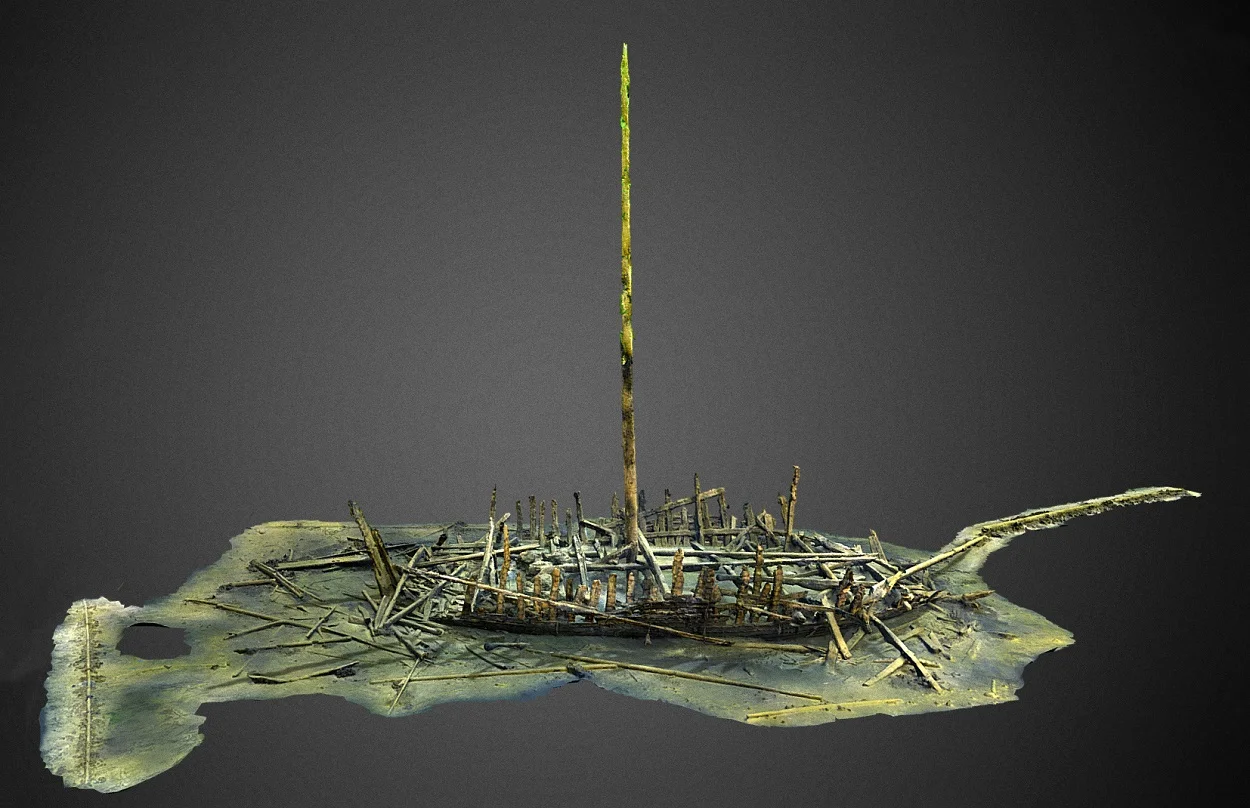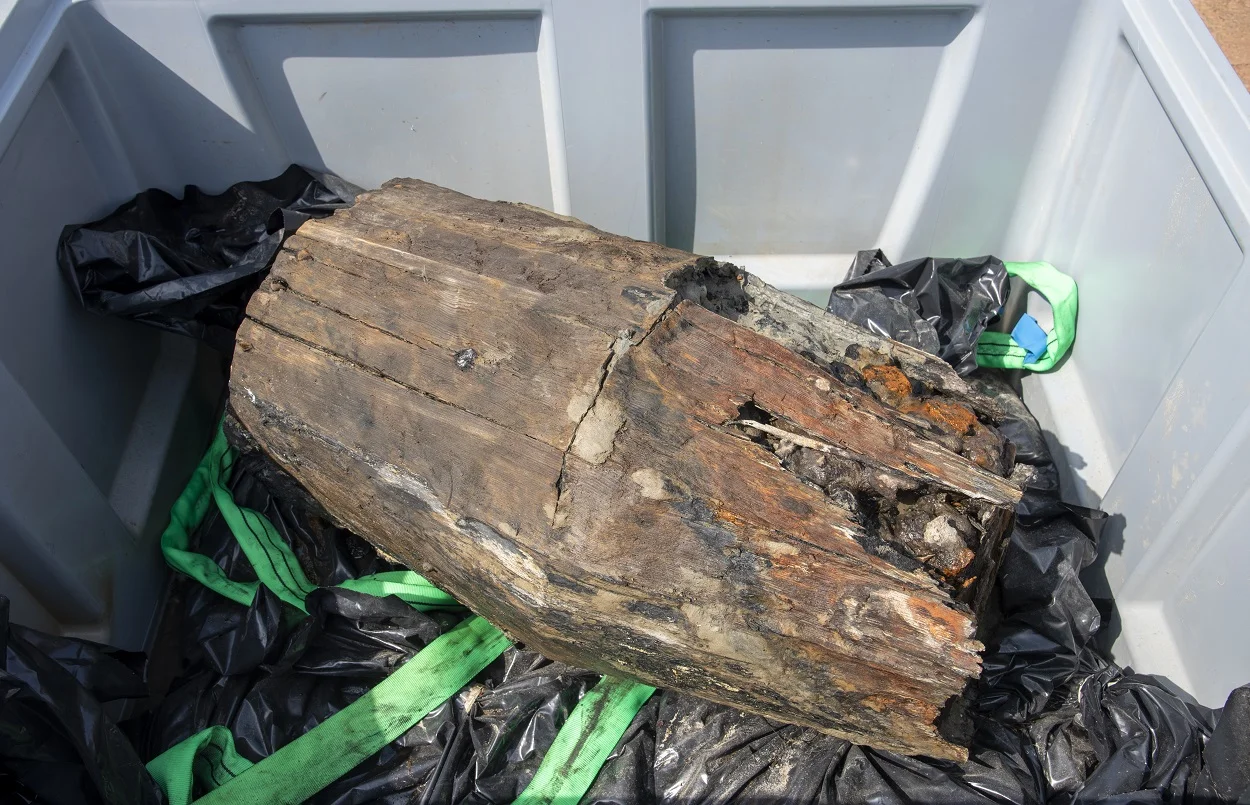Underwater archaeologists from the Vrak – Museum of Wrecks have raised a wooden barrel containing osmond from a 16th century shipwreck off the Baltic coast of Sweden.
Osmond is a form of iron made by melting pig iron in a hearth that is narrower and deeper than a typical finery forge. Written sources indicate that osmund iron was a significant export product from Sweden from the Middle Ages to the 17th century.
The shipwreck, named the “Osmond Wreck” by Vrak archaeologists, was first discovered in 2017 north of Dalarö in the Stockholm archipelago. The ship is a clinker-built ship, a design of medieval construction in which the edges of hull planks overlap each other.
A dendrochronological analysis of the ship’s timbers suggest that it was constructed in Stockholm in the 1540s. Sometime around 1553, the deck was repaired with wood felled in southern Finland.

According to Vrak, the wreck is well preserved and still has the main mast standing, as well as cargo still in situ. Underwater studies have identified 30 barrels at the wreck site, 20 of which contain fist-sized lumps of osmond, while the remaining barrels contain tar, ash, and butter.
Excavations of the cargo have also revealed large quantities of fish bones, and several horns belonging to the family Cervidae, that were likely being exported to make combs.
The recently raised barrel with osmotic iron is being sent to a conservator for further examination. “It was incredibly difficult to get it out and get it off – the barrel is so heavy and it’s a great depth, says museum wreck marine archaeologist Jim Hansson, project manager.”
Header Image Credit : Vrak
Sources : Vrak – Museum of Wrecks





